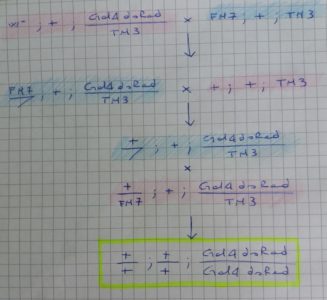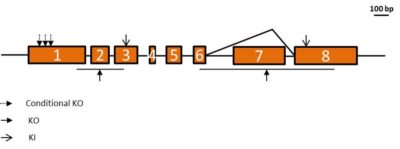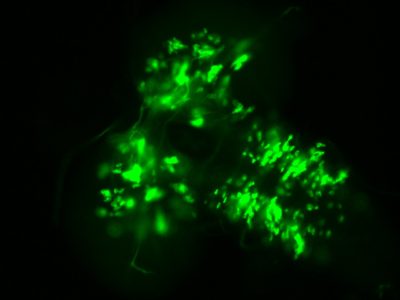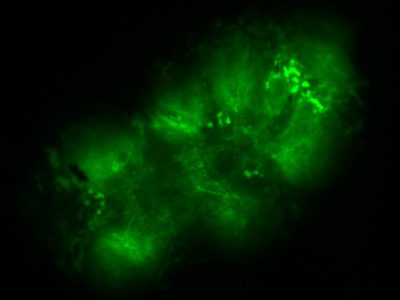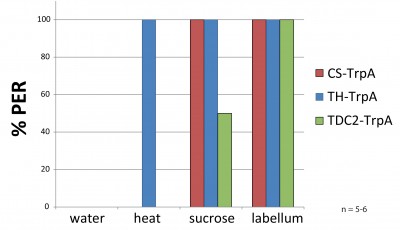Crosses for isogenize FoxP-IsoB-Gal4 line
on Tuesday, June 19th, 2018 12:13 | by Ottavia Palazzo
Category: crosses, Foxp | No Comments
Initial screen results
on Monday, June 18th, 2018 1:15 | by Gaia Bianchini
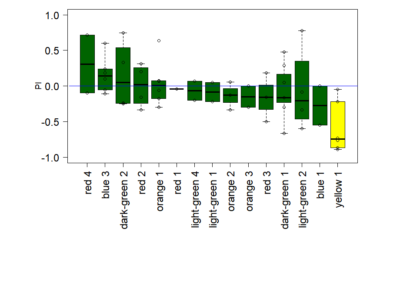
Yellow 1 (Positive Control): Gr28bd-G4, TrpA1-G4
Light: intensity (500 Lux side, 1000 Lux bottom), frequency (20Hz)
Category: crosses, genetics, lab.brembs.net, neuronal activation, open science, Operant learning, Optogenetics | No Comments
CD8-GFP x FoxP-IsoB_Gal4
on Friday, June 8th, 2018 11:47 | by Ottavia Palazzo
Not confocal immages (going to the confocal this week)
The construct I am analyzing is the FoxP-IsoB_Gal4, so with the Gal4 inserted in the 8th exon
Larvae
Adult VNC
Category: crosses, Foxp | No Comments
quality test before strokelitude experiments
on Monday, January 29th, 2018 12:40 | by Christian Rohrsen
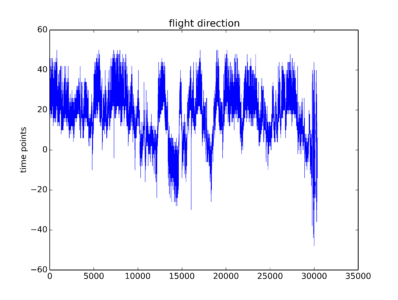 Some traces from this week just so that you have an idea how do they look like. To me they are not the optimal traces I expected. But one can see some signal there. I will start the screen hoping to get enough good traces without too much work.
Some traces from this week just so that you have an idea how do they look like. To me they are not the optimal traces I expected. But one can see some signal there. I will start the screen hoping to get enough good traces without too much work.
what do you think is the best quality control for accepting a trace for the analysis or not. I was thinking the 3D mapping gives a good hint but without quantification.
In addition I was writting to Andi Straw to solve the issue of running two cameras in the same computers, but now answer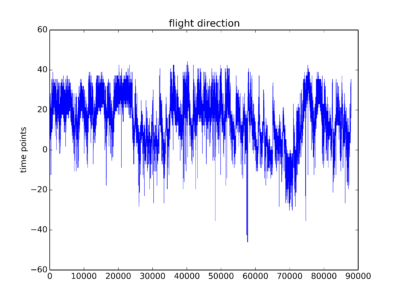
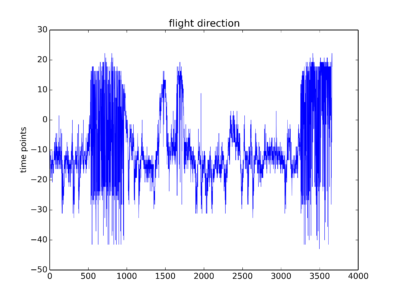
Category: crosses, flight, genetics, Spontaneous Behavior, strokelitude, WingStroke | No Comments
Usage of TrpA with infrared lamp
on Wednesday, February 13th, 2013 11:40 | by Christine Damrau
As a pilot for future experiments I tried to reproduce results from Keene et al., 2012. There, they substituted sugar by a laser to provoke PER after 24h of starvation (females, one week old). In TH-GAL4 they found 100% response when they pointed the laser to head or thorax. In tdc2-GAL4 indeed they found 50% of flies responding to heat but only when the laser was pointed to the thorax but not to the head.
Since we do not have this kind of laser, they used, I played around with an infrared light. Flies were fixed to hooks and a clamp as always. First, there was given a filter paper soaked with EVIAN-water (negative control), then there were 10s of heat (36-38°C), afterwards two positive controls: 30% sucrose on the legs and finally on the labellum.
In the figure, you can see that I am able to reproduce the methods with an infrared lamp instead of a laser. The TH-GAL4 flies crossed to TrpA respond much more to heat compared to the controls (see figure in blue and red). The proboscis extension appears already after a few seconds.
Unfortunately, I could not reproduce the results for tdc2-GAL4 (see figure in green). There was no response to heat found at all. (tdc2-GAL4 has to be ok, because I see fluorescence when crossed to GCaMP). Interestingly, the flies did not respond as strong to the 30% sucrose as expected. The starvation may have to be longer to increase motivation?
Next step will be to see a phenotype that can be seen by activating tdc2-GAL4. That may be PER after longer starvation or flight behavior.
Category: Biogenic Amines, crosses, genetics, neuronal activation, PER, TrpA | 1 Comment
Crosses to check the TARGET flies
on Tuesday, December 4th, 2012 12:49 | by Julien Colomb
Since we have problems with Madeleine’s project, I will make crosses to test that the flies are ok before using them for PKC RNAi experiments.
the putative elavGal$;tubGal80ts flies will be crossed to w; AKAP/Cyo flies. Then the son ElavGal4/Y, tubGal80ts/+ will be crossed to w.
Only non Cyo male flies should get white eyes, if not, the stock is not clean.
In parallel, I will also start crossing nsybGal4 into the tubGal80ts line (2 to 4 crosses necessary depending on the eye color of the heterozygotes).
Category: crosses, genetics | No Comments
